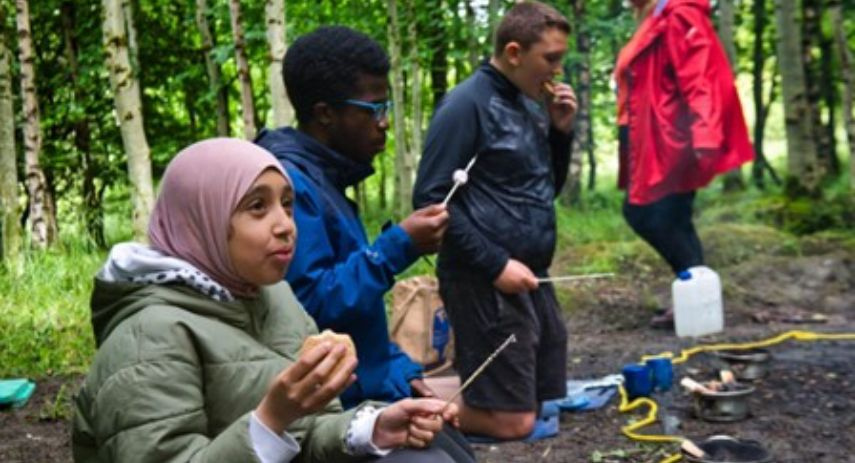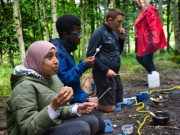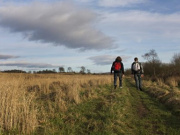
The Seven Lochs Wetland Park
collaboration/management agreements, inclusive board structures
Spanning the Glasgow City and North Lanarkshire Council boundary between Easterhouse, Coatbridge and Stepps the Seven Lochs Wetland Park is Scotland’s largest urban nature park. It is managed by the Seven Lochs Partnership using a collaboration agreement. The park’s vision is to protect and enhance nature, promote the health and wellbeing of local communities and visitors all while supporting regeneration of the area.
A masterplan for delivering a new green partnership
This area of Glasgow and North Lanarkshire was due to experience significant development. The local authorities were keen to protect high quality green networks and ensure that existing communities and nature benefitted from the change.
Glasgow Clyde Valley Green Network Partnership (GCVGNP) brought together a small steering group in 2014 to inform a large-scale, cross-boundary green network project that would support growth in the area. GCVCNP developed a masterplan for delivering the Seven Lochs Wetland Park vision involving a range of partners, communities and organisations.
A collaboration agreement and an inclusive board structure
No single organisation could fund or deliver the range of project outcomes therefore partners agreed to a collaborative approach and signed the Seven Lochs Collaboration Agreement in 2016. This committed partners to shared outcomes, a project structure, and clear roles in project delivery to 2023. Within that agreement there was a clause that consider ‘commitment for working together beyond initial agreement’ to ensure the Seven Lochs Wetland Park was maintained in the longer term. Partners included:
- Glasgow City Council
- North Lanarkshire Council
- The Conservation Volunteers (TCV) Scotland
- Forestry and Land Scotland
- NatureScot.
This enabled a successful funding bid to implement the plans. A number of community trusts and private partners have joined the Partnership, including Provan Hall Community Management Trust, Glenboig Development Trust and Royal and Ancient Golf and Leisure Ltd. These group now manage park facilities and events.
The Partnership Board is made up of elected representatives from local authorities and partner representatives. It meets regularly to review progress and set future priorities and is supported by a project team and working groups as set out in provisions in the agreement. Glasgow City Council is the lead partner and principal fund holder. Glasgow City Council and TCV Scotland host a small staff team to deliver capital works and activities for the Partnership. The Collaboration Agreement has since been renewed with a subset of these partners. This includes a 20-year agreement to sustain the park, develop the green network for the benefit of local heritage and community.
A partnership that enables flexibility and efficient use of resources
There are several advantages to this type of governance arrangement. The Collaboration Agreement enables the project to be agile in terms of funding, with different partners being able to access different types of funding or grants. This formal commitment to work together towards these shared goals reduces risk for funders or investors. The partnership is efficient and effective as skills, capacity and knowledge are pooled around a specific place while there are time and financial costs in establishing a single organisation. By working closely with the local authority and community groups, the partnership can be responsive to local needs. The Collaborative Agreement also contains a clause that enables new partners to join and help deliver the shared vision. This future-proofs the partnership and makes it adaptable.
Sources:
- Interview (Kathie) Scott Ferguson
- www.sevenlochs.org
- https://onlineservices.glasgow.gov.uk/councillorsandcommittees/viewSelectedDocument.asp?c=P62AFQDNZ3Z32U0G2U

